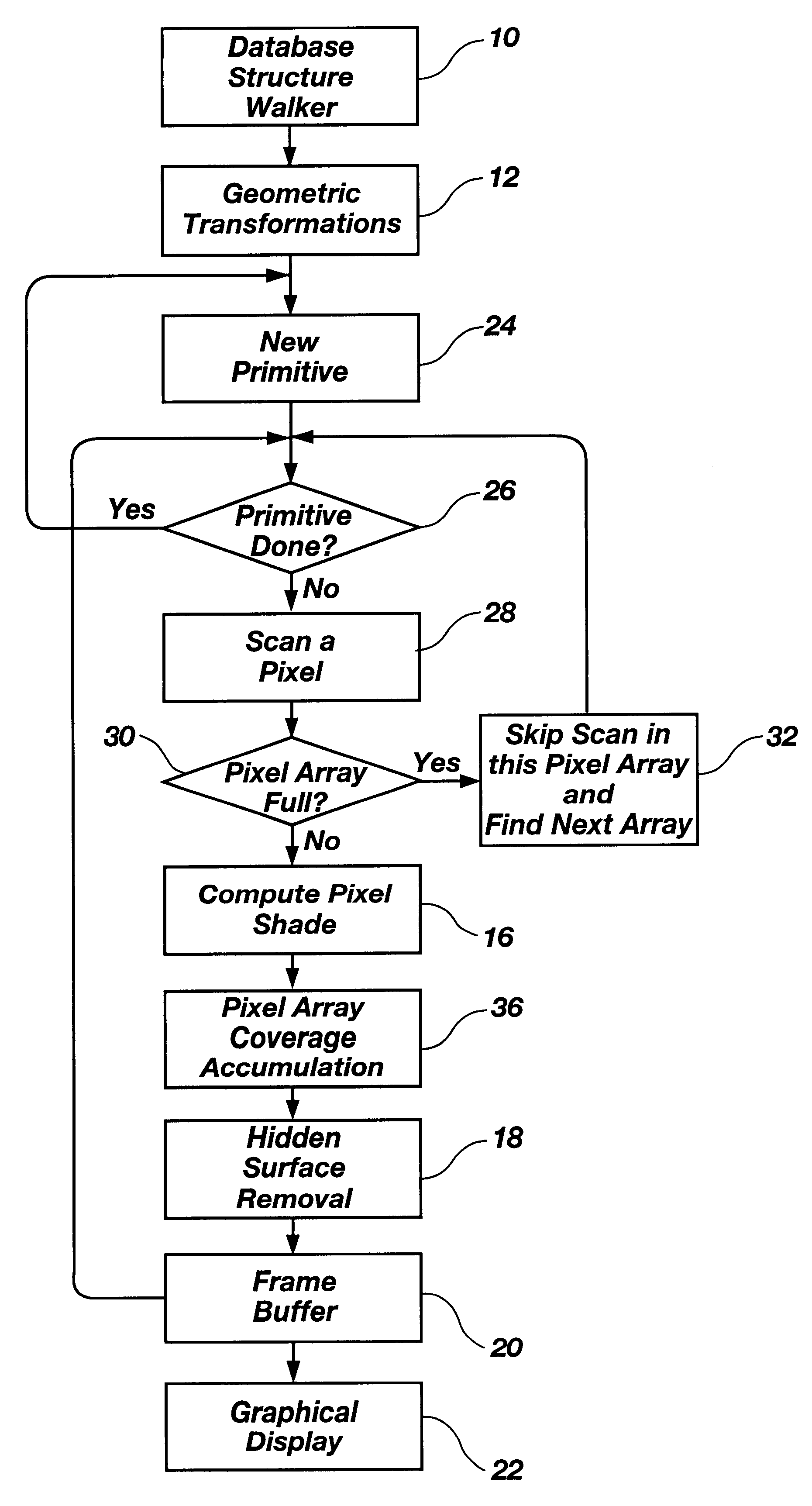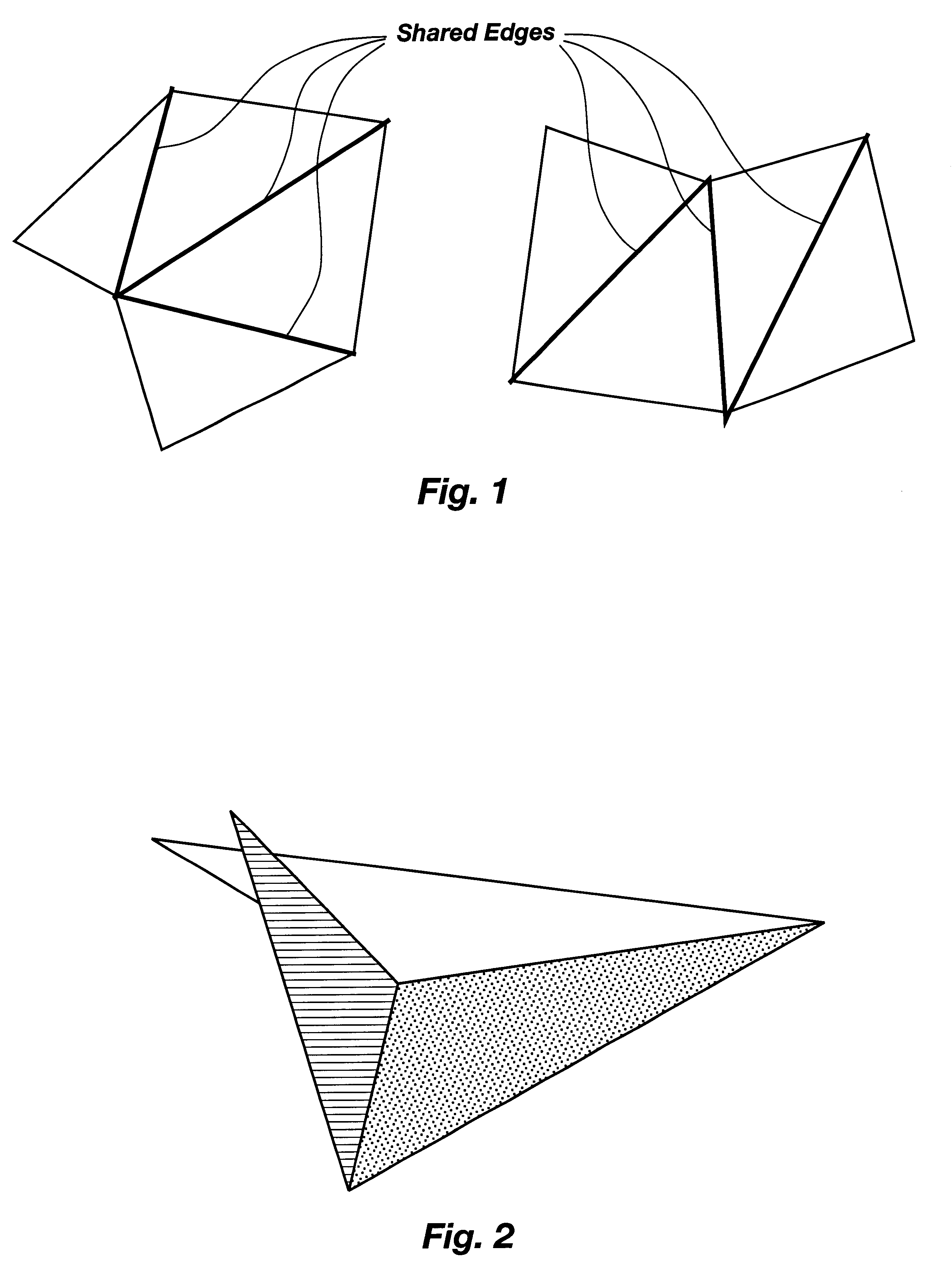System and method for reducing the rendering load for high depth complexity scenes on a computer graphics display
a computer graphics and scene technology, applied in the field of computer graphics displays, can solve the problems of increasing scene complexity of computer-generated imagery, high dependence, and the number of pixels that must be computed, and achieve the effect of reducing the pixel rendering load and cost-effectiveness
- Summary
- Abstract
- Description
- Claims
- Application Information
AI Technical Summary
Benefits of technology
Problems solved by technology
Method used
Image
Examples
Embodiment Construction
Reference will now be made to the drawings in which the various elements of the present invention will be given numerical designations and in which the invention will be discussed in greater detail so as to enable one skilled in the art to make and use the invention.
Simplified Full Buffer.
Referring first to FIG. 3, a simplified full buffer embodiment of the present invention is shown. FIG. 3 is a flow diagram describing the data flow during the process. At step 10 a database structure is evaluated. The geometric transformations are carried out at step 12.
Once the fill buffer has been initialized, the pixel rendering process can begin. Steps 24, 26, 28, 30 and 32 together determine which pixels need processing for a given primitive. As each pixel array of the primitive is identified, it is tested against the full buffer at step 30 to see if it can be skipped. The speed improvement comes from (1) skipping the shading (at step 16) and z-buffer calculations (at step 18) for pixels which...
PUM
 Login to View More
Login to View More Abstract
Description
Claims
Application Information
 Login to View More
Login to View More - R&D
- Intellectual Property
- Life Sciences
- Materials
- Tech Scout
- Unparalleled Data Quality
- Higher Quality Content
- 60% Fewer Hallucinations
Browse by: Latest US Patents, China's latest patents, Technical Efficacy Thesaurus, Application Domain, Technology Topic, Popular Technical Reports.
© 2025 PatSnap. All rights reserved.Legal|Privacy policy|Modern Slavery Act Transparency Statement|Sitemap|About US| Contact US: help@patsnap.com



